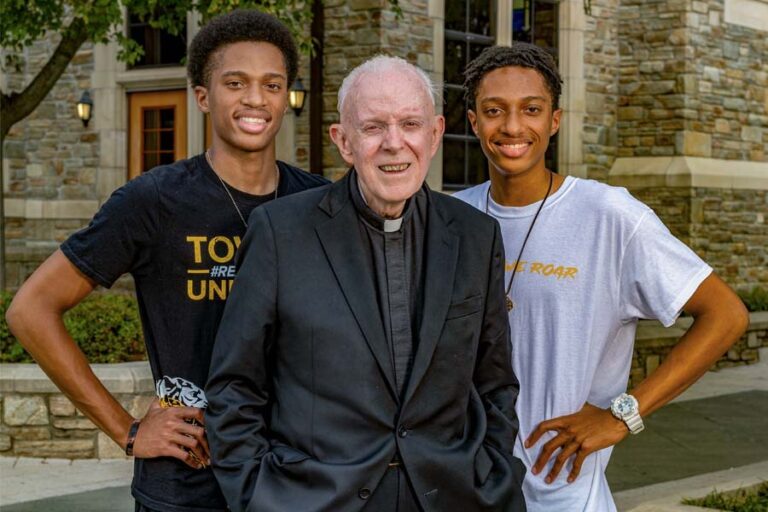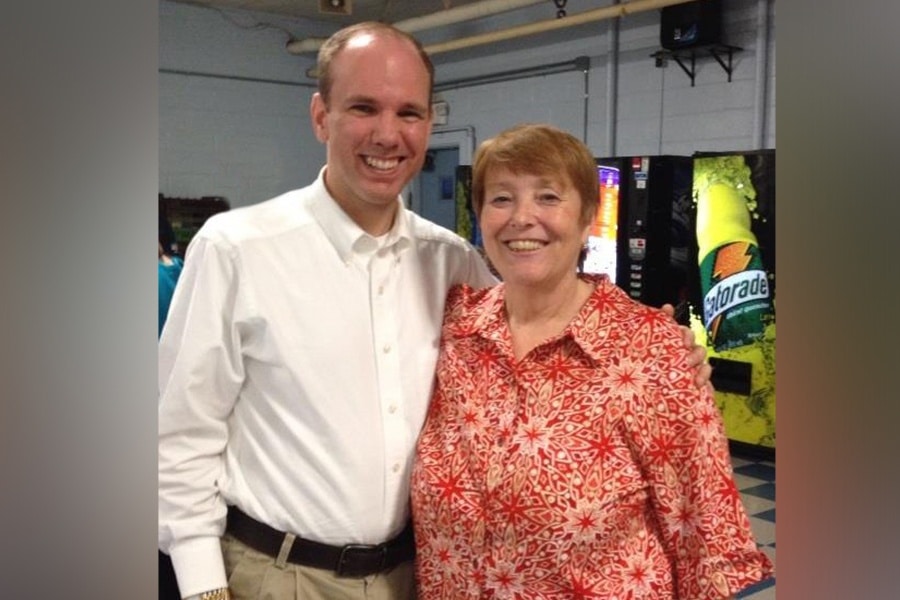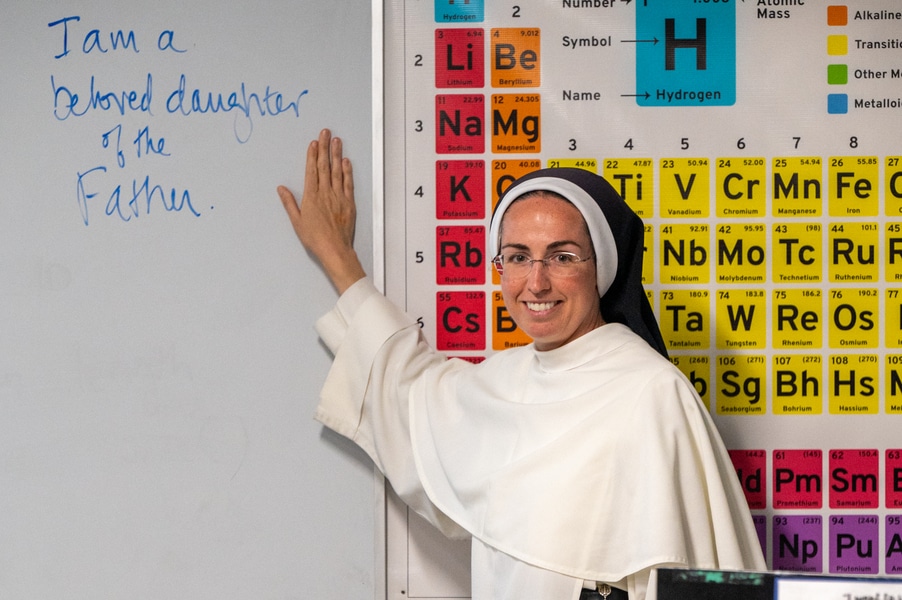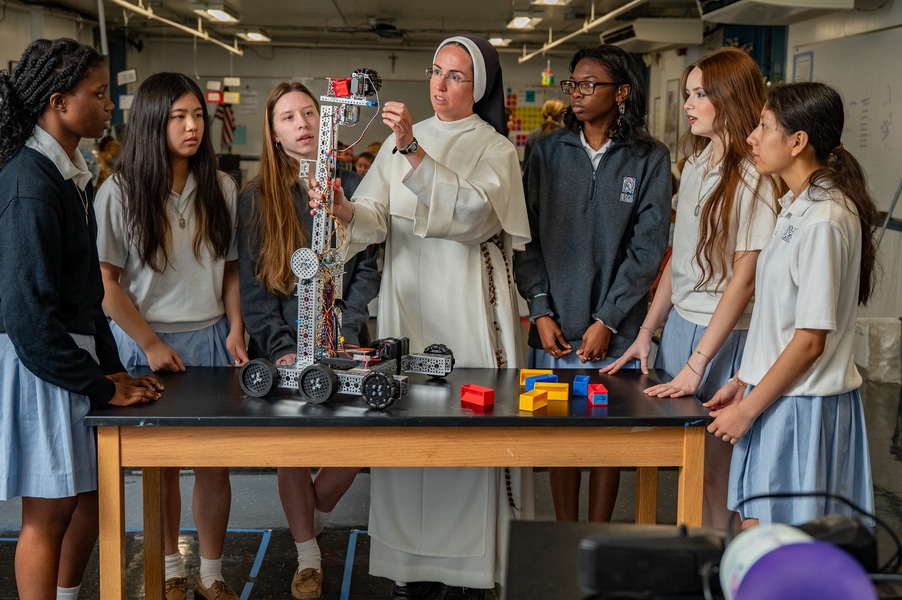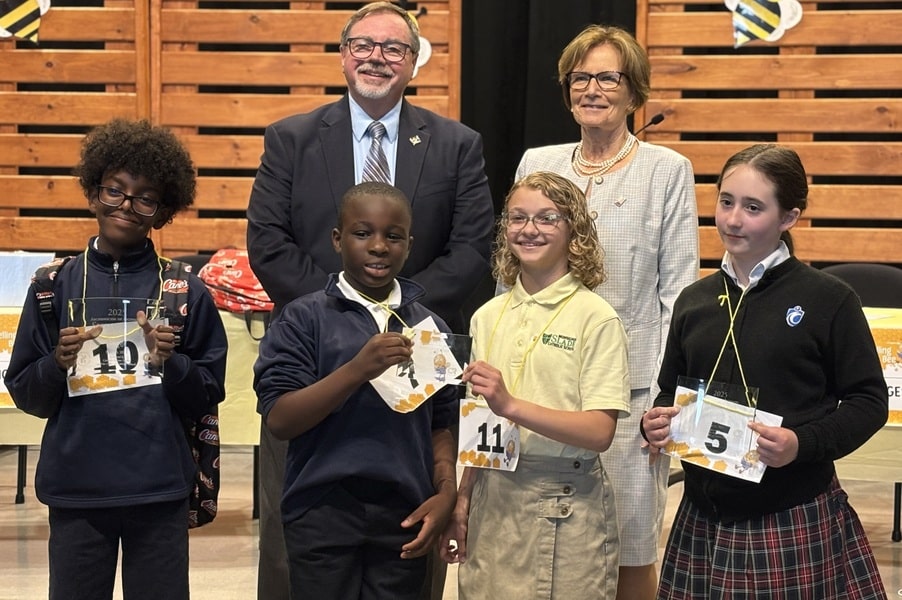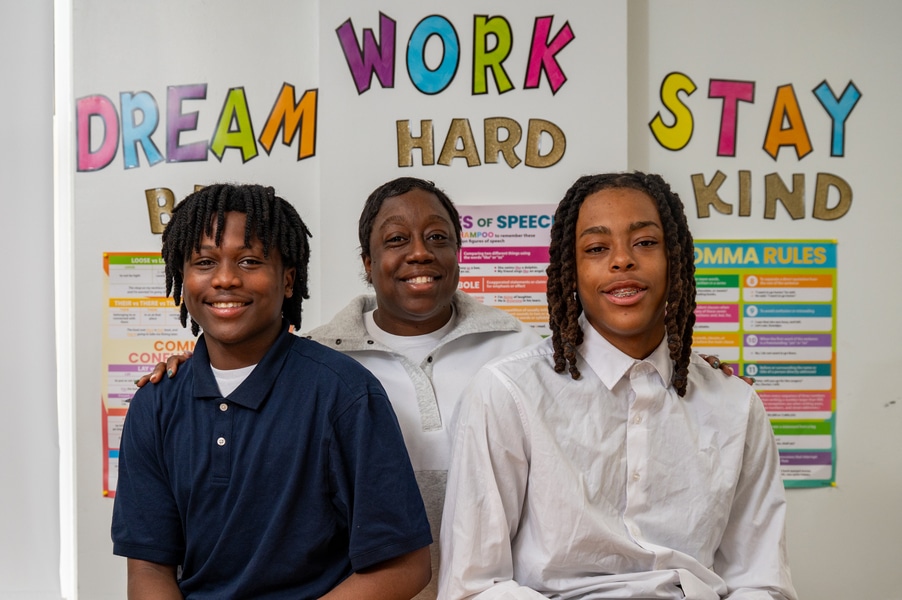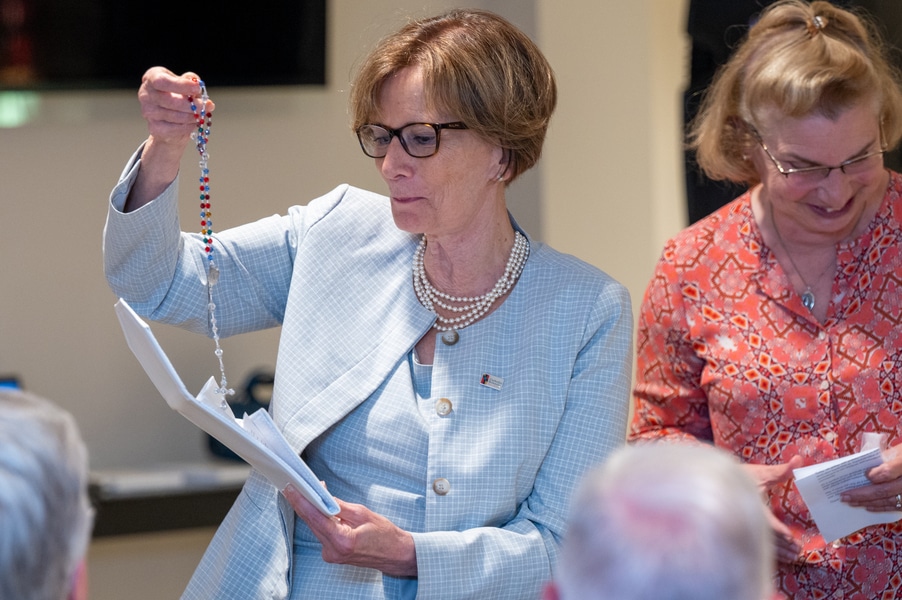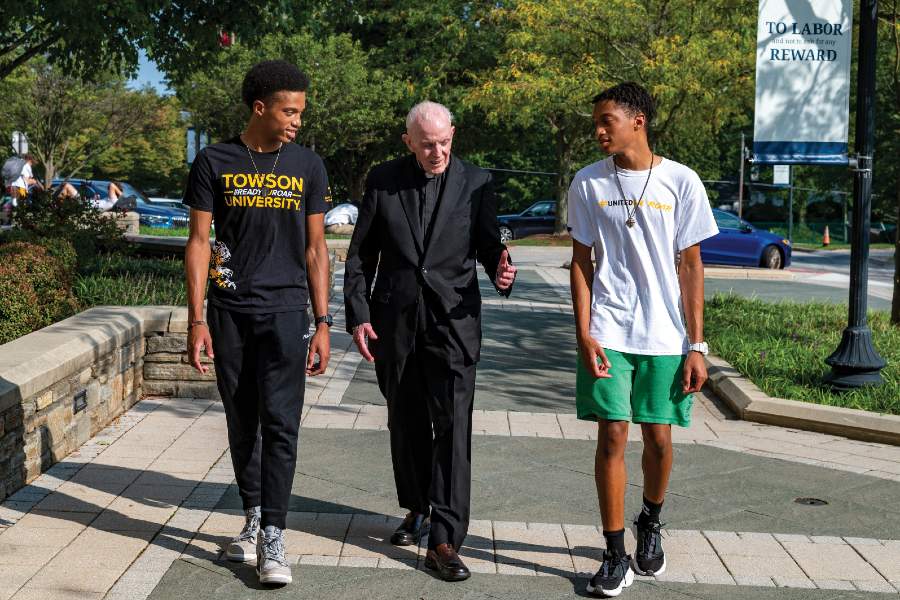
Kevin Marshall spent the summer visiting National Parks out West, continuing a passion he traces to an eighth-grade immersion experience in the Grand Tetons.
DeJonna Farrar puts her degree from Stevenson University to use as marketing coordinator for the Economic Alliance of Greater Baltimore.
Farrar went to Cristo Rey Jesuit High School in Fells Point. Marshall is one of three alumni on the faculty of St. Ignatius Loyola Academy in Federal Hill, the middle school for boys which broadened his horizons.
Both came through a Jesuit educational “ecosytem” in Baltimore City that is the inspiration of Jesuit Father William J. Watters. He’s 87, and last month announced plans to expand a pre-K based at St. Ignatius Parish into The Loyola School, one that will also serve grades 1-4.
Tuition at the high school is capped at $2,500. The other two are tuition-free. All rely heavily upon sponsors.
“Father Bill has an amazing quality,” said Earl Linehan, a parishioner of St. Ignatius who helped launch St. Ignatius Loyola Academy and is on the Board of Trustees at Cristo Rey Jesuit. “People want to help him, because there’s never anything about him in it. There’s no ego. His people have a tough time saying no because they know he’s doing good.”
In 1952, fresh out of St. Peter’s Preparatory in Jersey City, N.J., Bill Watters strode up from a train platform at Baltimore’s Penn Station and learned about life south of the Mason-Dixon Line.
“I walked into the big lobby, and saw ‘White’ bathrooms and ‘Colored’ bathrooms,” he said. “The exits were marked the same way. I said, ‘Wow, this is a different world.’ ”
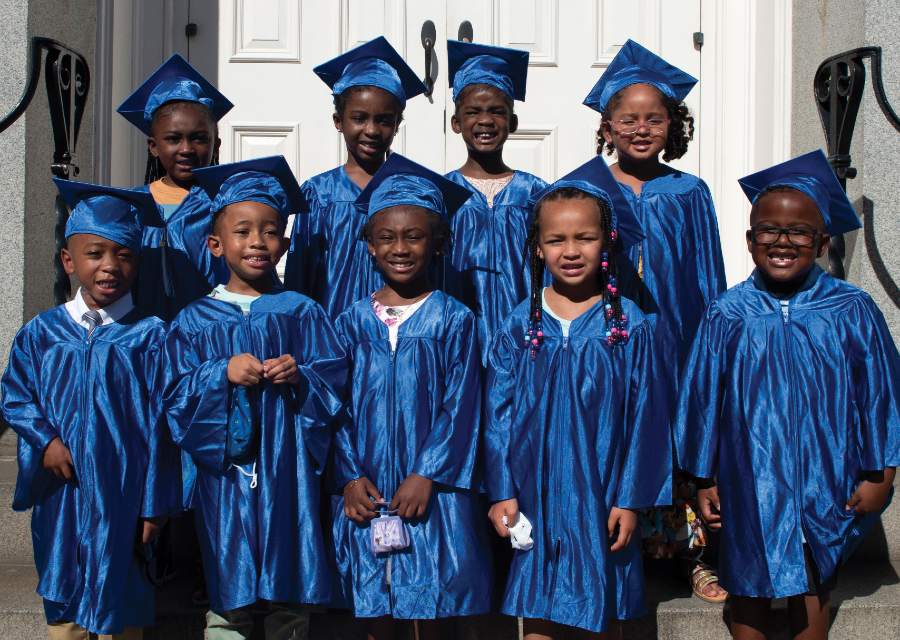
Seeking to enter the Society of Jesus, he walked to 740 N. Calvert St. St. Ignatius Church opened there in 1856, a year after the Maryland Jesuits brought to the block a school that grew into what are now Loyola University Maryland and Loyola Blakefield.
“The big task of the Jesuits, their mission, was to educate the poor,” Father Watters said. That’s what we’ve been doing here.”
His affinity for education included teaching at Loyola Blakefield. He had two stints as pastor of St. Ignatius, where he remains an assisting priest; ran a retreat center; and kept tabs on 215 priests.
The Jesuits were encouraging service in Africa. He went there on a sabbatical, fell in love with the people in Nigeria, and eventually returned as pastor of a parish where Mass attendance was in the thousands.
Father Watters saw “all these young Nigerian scholastics going into Catholic schools that are not our schools,” and created a steering committee that led, in 1996, to the opening of Loyola Jesuit College, a co-ed secondary boarding school with 600 students in Abuja.
By then, a heart condition had sent Father Watters back to Baltimore, where he had already opened a school.
Opportunity, experience
In 1993, he founded St. Ignatius Loyola Academy, with $150,000 from the Jesuits and a matching grant from the Abell Foundation. In 2013, the school moved from cramped quarters on Calvert Street to the former Catholic Community School of South Baltimore, on the campus of St. Mary, Star of the Sea.
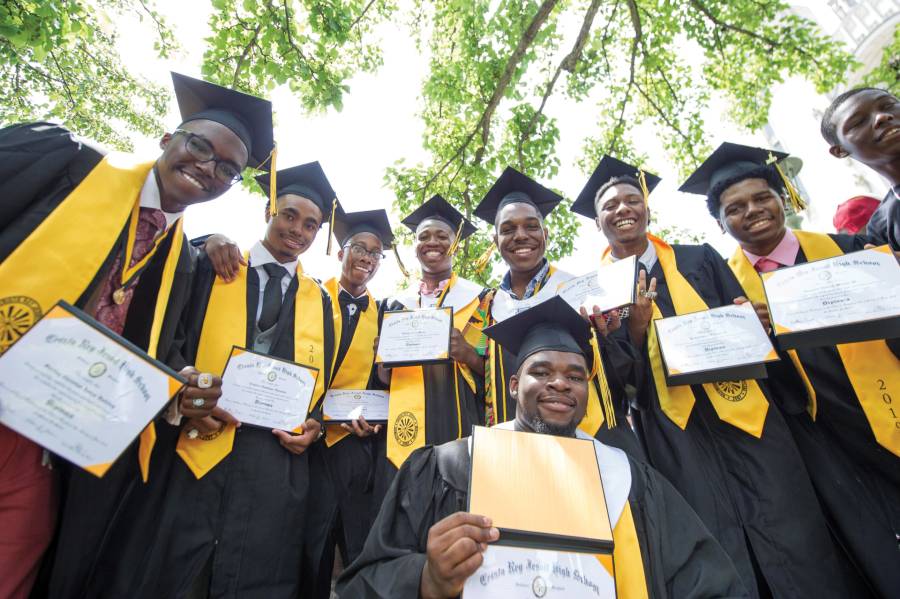
Marshall, the National Parks fan, learned in the former and teaches social studies and reading in the latter.
“This school provided opportunities and experiences that I might not have had (otherwise),” Marshall said. “Some of our boys cannot point out Maryland on a map when they come to us. Until I went there, I couldn’t locate Wyoming on a map.”
Marshall experienced more Jesuit rigor at Loyola Blakefield, Wheeling Jesuit University in West Virginia, and Loyola University Maryland, where he got his master’s in education. Kintrez Fowlkes, among triplets in the class of 2017, had a similar experience.
“They had Latin at St. Ignatius Loyola,” Fowlkes said. “I didn’t realize how far ahead that put me until I got to Loyola Blakefield.”
His brothers, Justin and Tre, went to Archbishop Curley High and Baltimore City College, respectively. All are freshmen at Towson University, among 567 graduates of St. Ignatius Loyola who have also gone on to service academies and Ivy League schools.
Father Watters stepped down as president in 2004, and told himself, “We have to have a high school for these kids.” Following a model he observed in Chicago and with considerable human capital from Loyola University Maryland, Cristo Rey Jesuit opened in 2007.
Farrar, the marketing director, is among its 714 graduates. CRJ students supplement tuition through an internship program, which sent her to an adult day care center, an insurance company in Owings Mills and a children’s museum.

“The academics were top-notch, too,” Farrar said. “In my sophomore year, I was one point from a higher grade in Spanish. I pleaded for that B-plus, but my teacher said, ‘You didn’t do the work necessary for that extra point. That’s not how we do it at Cristo Rey Jesuit.’ ”
Those internships are among the reasons CRJ is the only school in the Archdiocese of Baltimore mandating COVID-19 vaccines for teachers and students.
Next up for Father Watters is The Loyola School, which plans to have 200 students from preschool to grade 4. It headed back to the drawing board, literally, after a city preservation commission rejected plans to demolish parts of five row homes in Mount Vernon.
“We will definitely find a way, with God’s grace,” he told the Review.
Over two days in mid-September, a half-dozen teens and pre-teens were among the victims of gun violence in Baltimore City, which could exceed 300 murders a seventh straight year.
“I don’t know a better pathway out of some of the city’s problems than education,” said Linehan, president of Brown Advisory, an investment management firm. “I take my hat off to Father Watters and all the people who are trying to address that.”
Note: This article was updated at 3:33 p.m. on Oct. 5, 2021 to correct the spelling of DeJonna Farrar’s name. The Review regrets the error.
Also see
Copyright © 2021 Catholic Review Media

